I have image of ribs in a factory and some of them can be bent. For each rib I have binary mask of it - here you can see masked image of all ribs at once. Masked ribs illustration:

If it helps you, here are all ribs masks connected to one. Rib masks:

As you can see, ribs aren't just vertical, but can be rotated too. But i need detect bent ones (for example third rib from left in image). Do you please have any idea how to do it?
I have tried distance transform to find center of rib and then working with it like with 1D function, but whole rib is about 50 pixels wide, so noise is too big - function has too much peaks to use derivatives or some approximation. Next, I wanted to try something like Hough-Lines on upper and lower part separately, but details I am looking for (as you can see, bent is not big) are too small for this method.
All I need is to say "is bent" or "is not bent". At the moment, I have no other ideas how to detect bent ribs. I would be pleased for some idea.